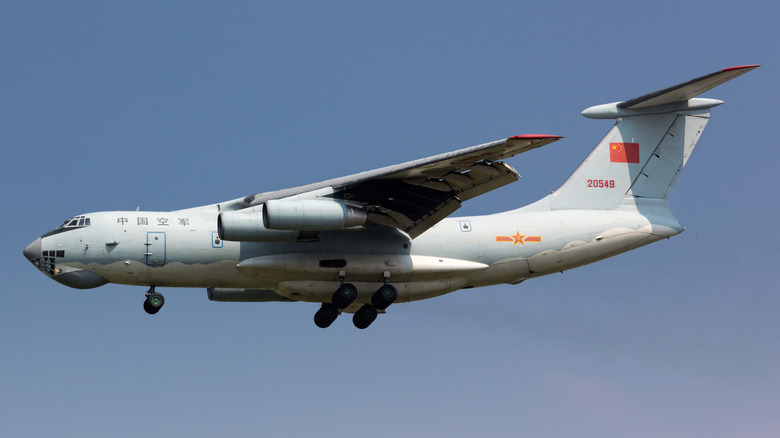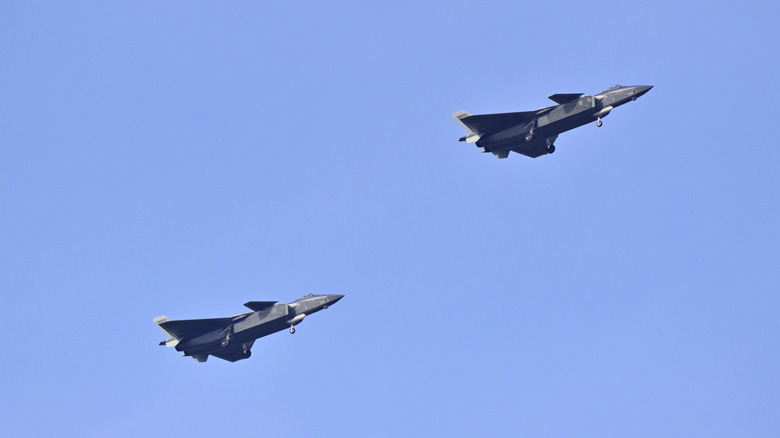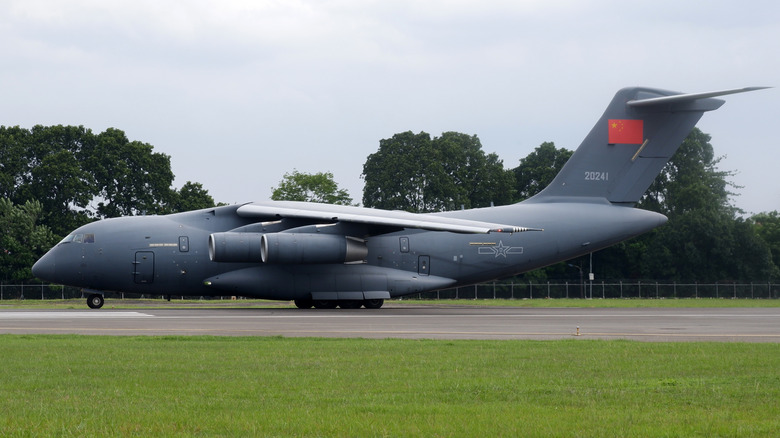How Big Is China's Air Force? Here's How Many Aircraft It Has
China's airpower comes from two main branches: the People's Liberation Army Air Force (PLAAF) and the People's Liberation Army Naval Air Force (PLANAF). Combined, they operate one of the largest air forces in the world. According to the U.S. Department of Defense (link will download a PDF to your device), China has over 3,150 total active military aircraft. That figure excludes training aircraft and drones. Around 2,400 of its active military aircraft fill combat roles, including fighters, bombers, multi-role tactical jets, and attack aircraft.
The fighter fleet alone is about 1,900 strong, with roughly 1,300 being fourth-generation jets like the J-10, J-11, and J-16. The inventory also includes older third-generation designs such as the J-7, a Chinese copy of the Soviet MiG-21, which still make up part of the numbers. The PLAAF is the larger branch, tasked with defending national airspace and providing offensive capability, while the PLANAF focuses on maritime operations and carrier aviation.
The U.S. still has more total aircraft when all branches are counted, but China's rapid production pace, especially of newer fighters like the J-20 stealth jet, has narrowed the gap in recent years. While China's numbers are impressive on paper, many of the aircraft are aging models with limited capability against modern Western fighters. Even so, its fleet size makes it the largest aviation force in the Indo-Pacific region and the third-largest in the world.
Modernization and production capacity
China's combat aircraft inventory has been gradually shifting from older Soviet-derived models to advanced domestic designs. In the 1990s and early 2000s, the PLAAF acquired Russian fighters, including the Su-27, Su-30MKK, and Su-35. Shortly after, China started producing its own versions of the Su-27, calling it the Shenyang J-11. As of this writing, China's production lines are turning out advanced types in large numbers.
China is building more than 100 J-20 stealth fighter airframes per year, entirely for domestic use. This focus on mass production is one advantage the J-20 has over the West. Other key platforms like the J-16 multi-role fighter and J-10C are also being produced steadily at 100 and 40 airframes, respectively, annually.
The PLANAF, on the other hand, operates the carrier-based J-15, derived from the Russian Su-33, but future carriers are expected to deploy the newer FC-31-based design China's answer to America's F-35. The country's aerospace industry is now far less dependent on Russian technology thanks to domestic engine programs like the WS-10 and WS-15. However, China's airpower is still concentrated regionally. Unlike the U.S., which spreads its forces globally, Chinese aircraft are positioned mainly for operations near its borders and coastline.
Capabilities and limitations
China's large fleet size does not automatically translate into global reach or overwhelming combat dominance. One key limitation is aerial refueling capacity. The PLAAF operates only a small number of Il-78 tankers and a few H-6 bombers converted for refueling, making sustained long-range missions difficult. To offset this, China has built airstrips and military facilities on artificial islands in the South China Sea, extending operational range without relying heavily on tanker support.
Another challenge is joint operations. Historically, the PLAAF played a supporting role to the army and navy, and only recently have reforms encouraged more autonomous decision-making by pilots during missions. This is still far from the U.S. model of integrated, decentralized execution in air warfare.
While China has modernized its fighter force and developed stealth capabilities, older jets like the J-7 remain in service and reduce overall fleet effectiveness in high-end conflict. The U.S. also assesses the J-20 as a 4.5-generation aircraft rather than a true peer to the F-35. Nevertheless, China's airpower growth is significant, particularly in the Indo-Pacific, where proximity allows it to concentrate forces in potential flashpoints such as Taiwan.


